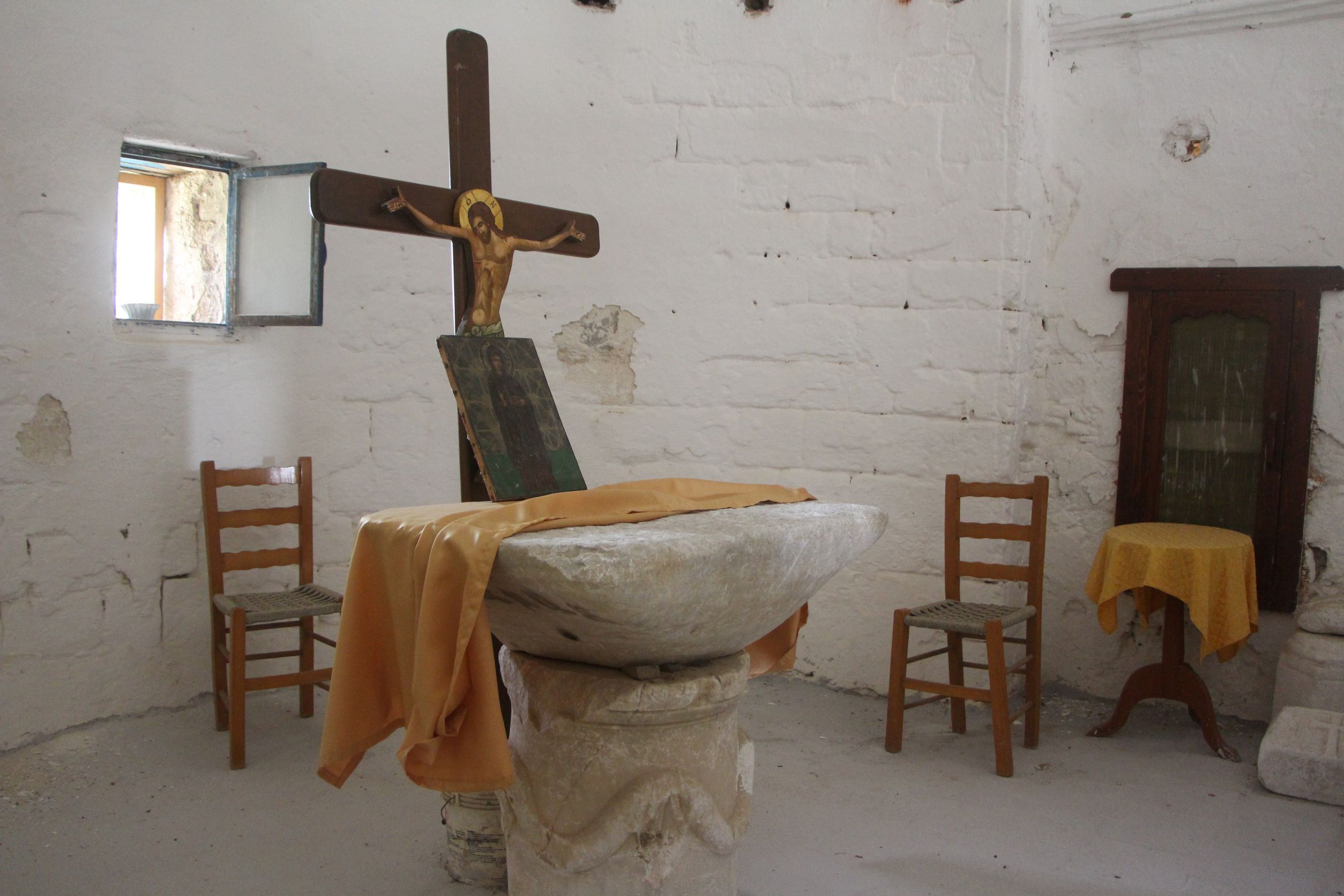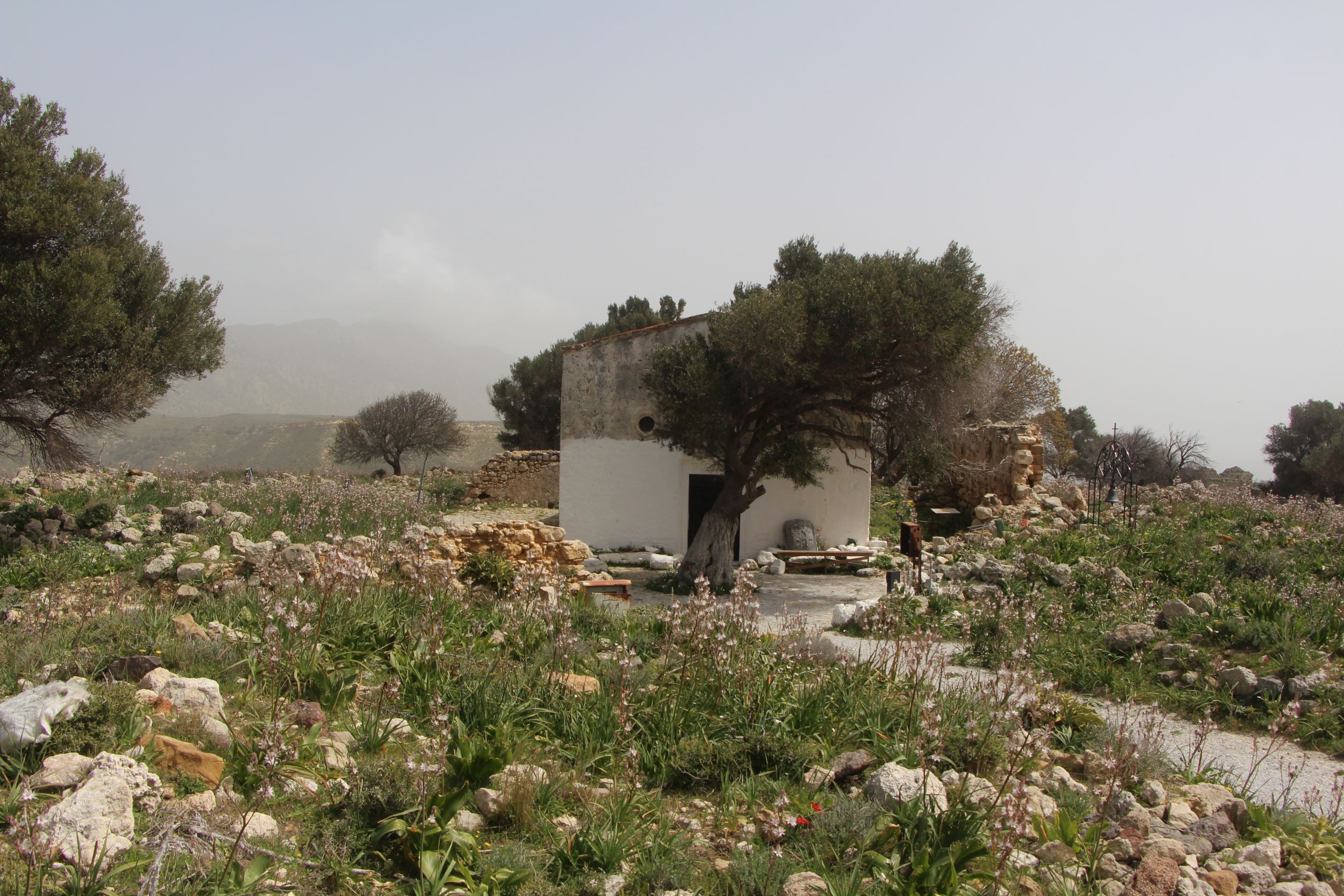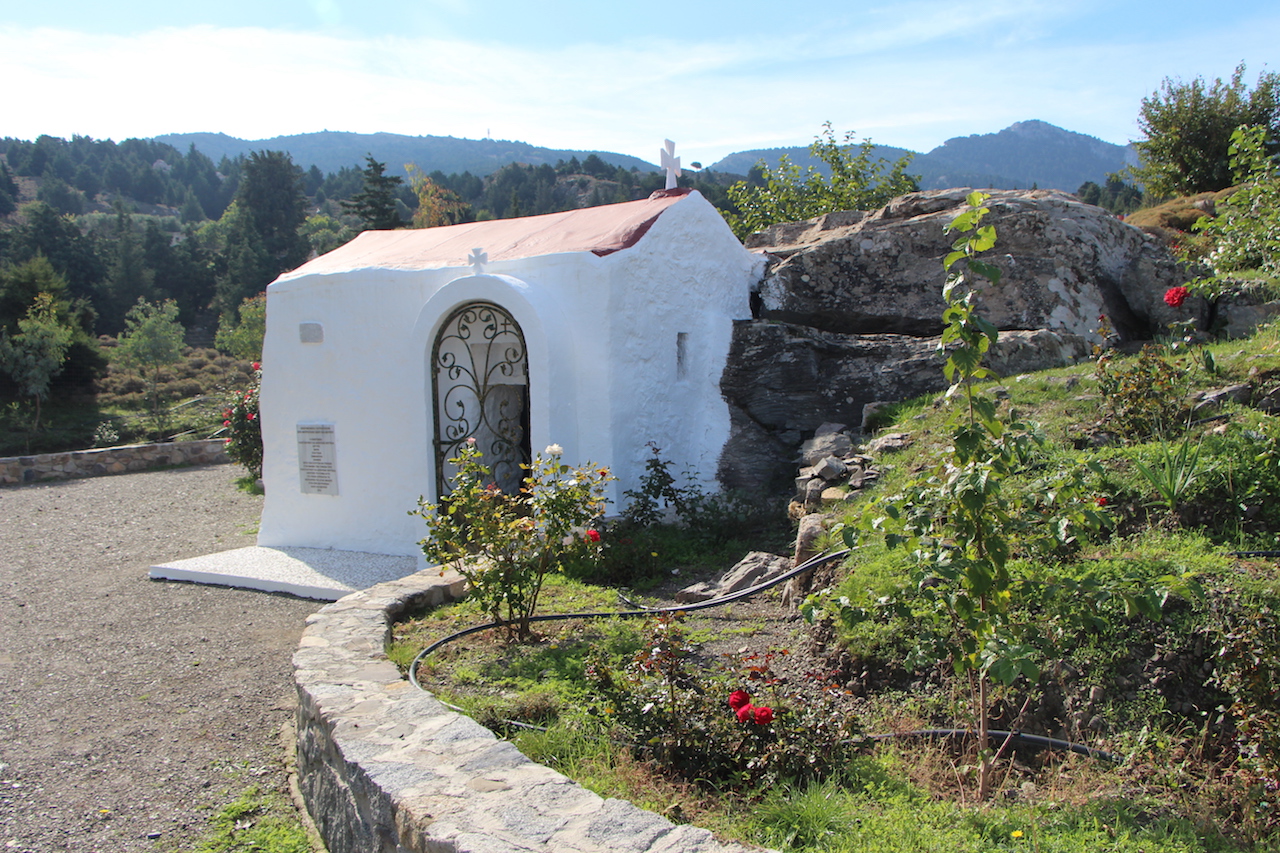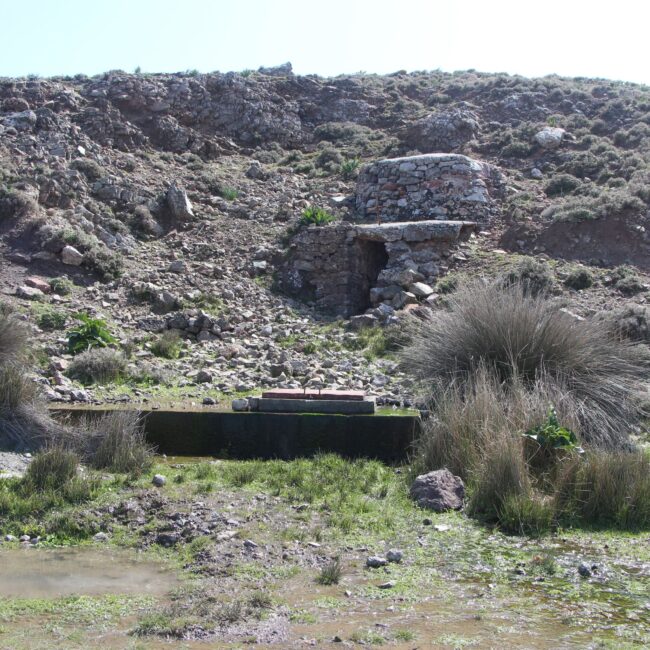Agia Paraskevi is the biggest church still in service inside the castle of Antimachia, but is usually closed to visitors. It is an oblong structure, 13.28 x 4.92 meters wide, covered with a closed arch and hydraulic mortar. The east side of the structure ends in an apse, semicircular from the inside and pentagonal from the outside. The entrance, 1.15 meters wide, is located in the middle of the west side of the structure, while a second entrance is located on the western corner of the south side.
The church is built on the eastern side of the fortified village. Agia Paraskevi was destined to be the major church of the castle, as witnessed by its size, its location, its good construction technique and the existence of a quite large enclosure.
Even though no epigraphic or chronological elements have survived, the absence of visible building phases show that the church was built in the middle of the 15th century, during the same period as the settlement itself. The full length figures of donors or dignitaries depicted on the western wall next to the western entrance seem to date from the middle of the 15th century.
The walls are made of dry stone and mortar. The outside southern wall is covered with a sort of limestone brick. Here, a beam covered storage room with embrasures was added, at a later stage. A lot of elements show the influence of byzantine tradition and style, like the space between the summetrically built stones that is filled with horizontal layers of ceramic debris, the double rows of bricks that protrude irregularly on the outside walls, but also the adjacent blind vaults in the pentagon arch, reminiscent of monuments from the architectural heritage of Constantinople. The floor is covered with ceramic square slabs.
Four piers along the two interior sides of the church support reinforced arcs. The two western piers have paleochristian capitals as imposts.
Inside and outside the church, various architectural parts are spoils from roman, early christian or byzantine monuments like the cylindrical altar of white marble with bucraniums and garlands with the inscription “ΤΙΜΑΧΙΔΑΣ ΠΑΥΣΑΝΙΑ” that is used to hold the slab of the altar. The slab itself is an impost of an early christian capital.
Scarce remains of mural paintings can be found on the interior walls of the church of Agia Paraskevi. On the west side and over the entrance, there are remains of a monumental depiction of the Apocalypse and the Last Judgment, dating probably from the 17th century. Next to the door, two full length lithe figures, of relatively small dimensions, with long garments can be seen. One figure bears a huge head covering that may depict some dignitary. Albeit its poor conservation, these figures seem to date from the middle of the 15th century. On the upper side of the wall, an enthroned Christ is depicted, surrounded by indiscernible full lengthy holy figures, dating probably from the end of the 18th century.
At least 30 years ago, people used to come on donkeys to the castle for the Saint’s feast, and the women used to observe the vigil and laid kilims (rugs) on the floor, together with their children and grandchildren, singing hymns and the lectionary of the Saint.




















